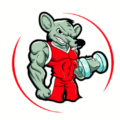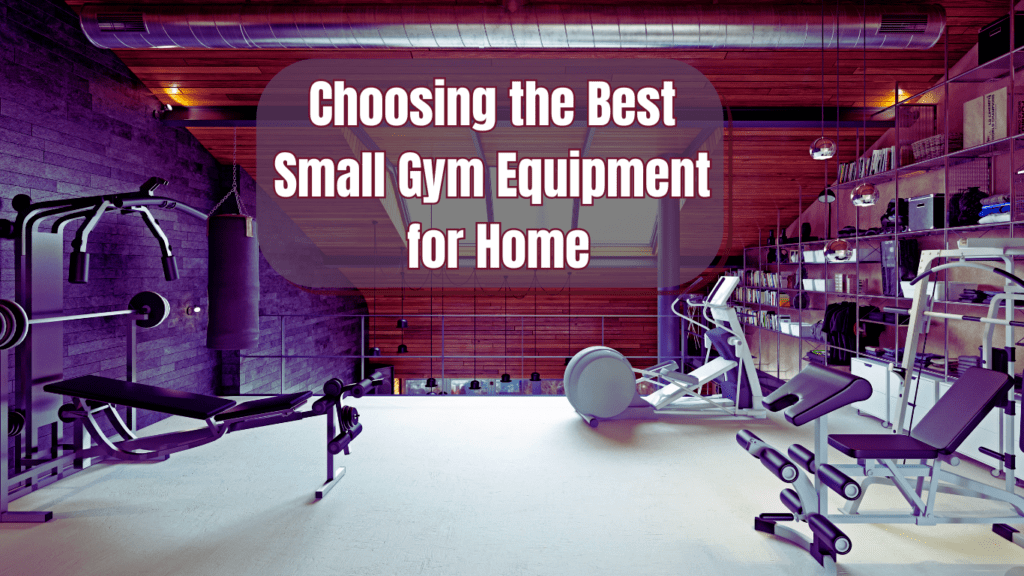CrossFit Equipment for Home: Your Ultimate Guide to Building a Perfect Setup
In this article, we’ll provide a comprehensive guide on setting up your CrossFit equipment for home, offering tips and insights to build a space that supports your fitness goals.
Did you know that over 70% of fitness enthusiasts prefer working out at home rather than in a gym? This growing trend is driven by the convenience, cost-effectiveness, and flexibility of home workouts. Among the countless fitness regimens available, CrossFit stands out as an ideal choice for home fitness enthusiasts. Why? Because it’s versatile, scalable, and delivers high-intensity results with relatively minimal equipment. If you’ve been considering setting up a CrossFit space in your home, you’re in the right place. This guide will walk you through the basics and help you identify the essential CrossFit equipment for home to maximize your workouts.
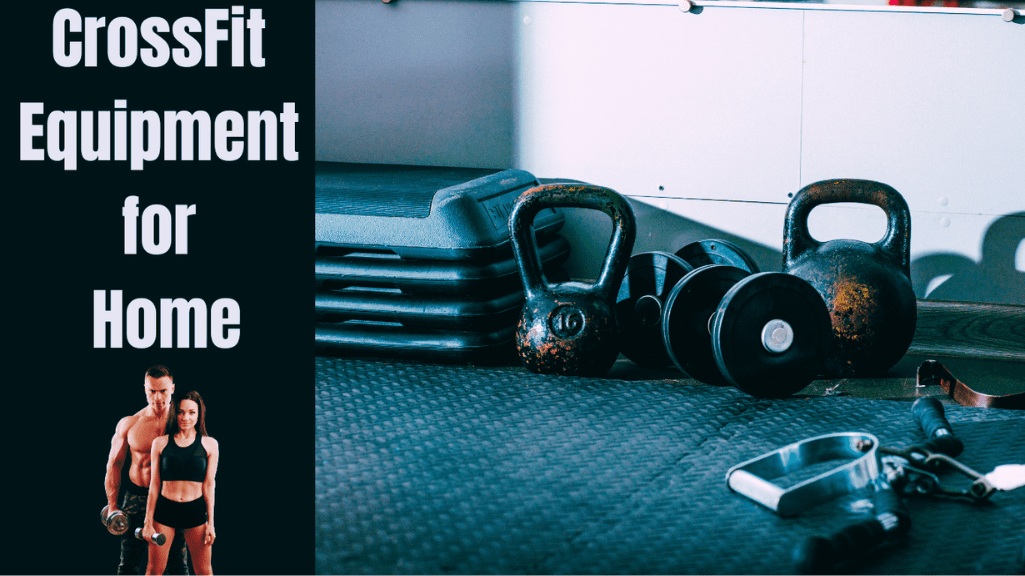
What is CrossFit, and Why Is It Perfect for Home Workouts?
CrossFit is a high-intensity fitness program that combines elements of cardio, weightlifting, gymnastics, and functional movements. It’s designed to improve overall fitness by targeting strength, endurance, flexibility, and agility. The beauty of CrossFit lies in its adaptability—whether you’re a beginner or an experienced athlete, you can scale the workouts to your fitness level.
For home fitness enthusiasts, CrossFit is particularly appealing because it doesn’t require a fully equipped gym. With the right tools and a bit of space, you can perform a wide variety of workouts that rival those you’d do in a professional gym.
Subscribe And Get Our Free E-Book:Unlocking The Power Of Nutrition-Supplements, Substitutes, and Superfoods!
Why Home CrossFit is Trending
Over the last few years, more and more people have opted to skip the gym and build their own fitness spaces. Here’s why home CrossFit is gaining traction:
- Convenience: No commuting, no waiting for equipment, and the freedom to work out on your own schedule.
- Cost-effectiveness: While the initial investment in CrossFit equipment for home might seem significant, it’s far more affordable in the long run compared to monthly gym memberships.
- Flexibility: Tailor your space and routines to suit your preferences, fitness goals, and schedule.
Setting up a home CrossFit gym can seem overwhelming at first, but with some planning and the right choices, it’s entirely doable. Below, we’ll cover the essential equipment you’ll need, tips for making the most of your space, and how to ensure your setup supports a variety of effective workouts.
What to Expect from This Guide
By the end of this article, you’ll have a clear understanding of:
- The essential CrossFit equipment for home that’s versatile and durable.
- What to look for when choosing equipment to ensure quality and safety.
- How to maximize the use of your equipment to target multiple muscle groups and achieve a full-body workout.
Let’s get started by exploring what makes up the backbone of a solid home CrossFit setup. From versatile weights like dumbbells and kettlebells to foundational items like a sturdy pull-up bar, each piece plays a crucial role in enhancing your workouts. And remember, you don’t have to buy everything at once—start with the basics and gradually expand your collection based on your needs and budget.
How To Choose The Best CrossFit Equipment For Your Home Gym
Why Building a Home CrossFit Gym is a Game-Changer: CrossFit Equipment for Home
Building a home CrossFit gym is becoming a popular choice for fitness enthusiasts looking for flexibility, convenience, and a more personalized workout experience. Whether you’re a seasoned CrossFit practitioner or just getting started, having access to crossfit equipment for home offers numerous benefits that can help you achieve your fitness goals more effectively. Let’s dive into why more people are opting for this setup and what it can offer.
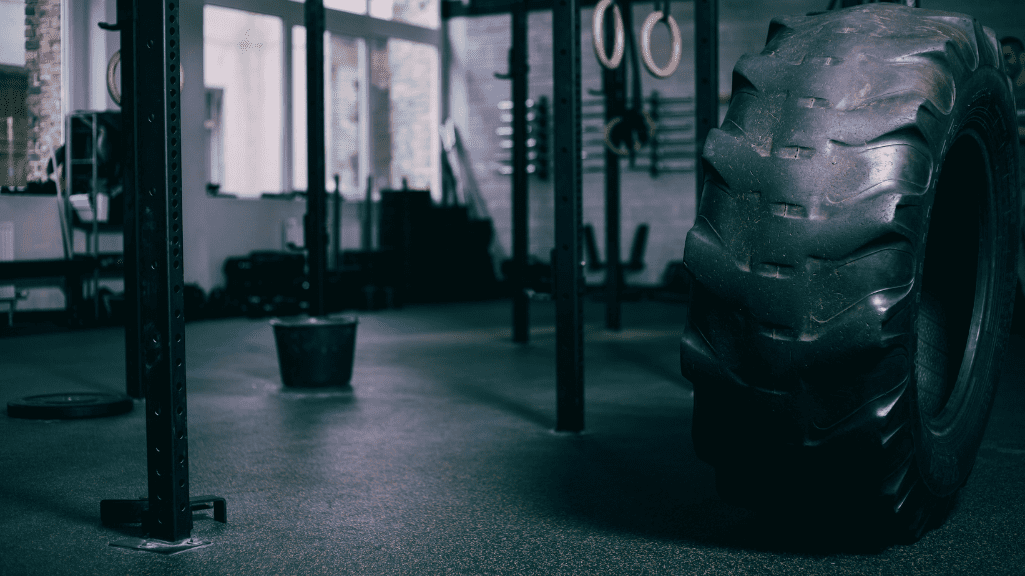
Advantages of a Home CrossFit Gym
1. Convenience
One of the most significant advantages of building a home CrossFit gym is the convenience it provides. Traditional gyms come with a number of drawbacks—limited hours, long commutes, crowded spaces, and waiting for equipment. With your own home gym, you eliminate all of these issues. You can workout at any time of the day, be it early in the morning or late at night. CrossFit equipment for home is always available, which means no more adjusting your schedule to gym hours.
- No Commuting: Traveling to a gym can take up valuable time, especially if traffic or weather conditions are unfavorable. With a home gym, you simply walk into your personal space and begin your workout.
- No Waiting for Equipment: At a gym, you may have to wait for equipment to become available during peak hours. Your home gym eliminates this problem—every piece of crossfit equipment for home is readily accessible, allowing for a smooth and uninterrupted workout session.
2. Customization
Another significant advantage of a home CrossFit gym is the ability to fully customize your workout space. When you have crossfit equipment for home, you are not limited by the layouts or equipment provided by commercial gyms. You can set up your gym to fit your specific fitness goals and personal preferences.
- Tailored Environment: With your own equipment, you get to design your workout area exactly how you like it. From the flooring to the arrangement of weights and machines, every element is optimized to suit your fitness needs.
- Variety of Equipment: You can choose from a wide range of crossfit equipment for home, including barbells, kettlebells, resistance bands, pull-up bars, and more. This ensures that your workouts are diverse and effective, targeting different muscle groups and fitness goals.
3. Long-Term Savings
Although there is an upfront investment involved in setting up a home CrossFit gym, the long-term savings are worth it. Gym memberships, transportation, and occasional equipment rental fees can add up quickly. With a home gym equipped with quality crossfit equipment for home, you eliminate these ongoing costs.
- Initial Investment: While purchasing crossfit equipment for home may seem expensive, you are making a one-time purchase that will last for years. High-quality equipment doesn’t wear out quickly, meaning you save money in the long run by avoiding monthly or yearly fees at commercial gyms.
- Better Value: Over time, equipment such as weightlifting bars, plates, and machines can be used repeatedly, offering a high return on investment.
Challenges and How to Overcome Them
While setting up a home CrossFit gym is incredibly beneficial, there are some challenges to consider—specifically around space, budget, and maintaining motivation. Let’s take a closer look at these challenges and how to effectively address them.
1. Space Limitations
One of the first concerns people face is whether they have enough space to create a functional gym at home. Whether you live in a small apartment or a larger home, optimizing your available space is key.
- Maximizing Small Spaces: Even if you don’t have a dedicated room for a gym, there are ways to make the most of your space. Compact crossfit equipment for home, such as wall-mounted racks or foldable mats, allows for a more flexible setup.
- Smart Layouts: Utilize wall space, corners, and multipurpose furniture to store and organize equipment. For example, using a bench with built-in storage for weights and resistance bands saves both floor space and keeps your gym organized.
2. Budget Considerations
Building a home gym requires an initial financial investment, but this doesn’t mean it has to be expensive. There are several ways to manage your budget while ensuring you get quality crossfit equipment for home.
- Starting Small: It’s not necessary to buy everything at once. Begin with essential equipment such as a barbell, dumbbells, and a sturdy floor mat. Gradually add more advanced equipment like kettlebells, pull-up bars, or specialized machines as you progress.
- Second-Hand Options: High-quality crossfit equipment for home can often be found at reduced prices through second-hand sales or refurbished items. Additionally, waiting for sales or promotions can help manage costs.
3. Motivation at Home
Working out at home can sometimes feel less motivating than going to a gym due to the lack of social interaction or the energy of a group environment. However, there are effective strategies to maintain your enthusiasm.
- Create a Schedule: Treat your workouts like appointments. Just as you would book a time slot at a gym, schedule specific times for your home workouts to hold yourself accountable.
- Design Your Space: Make your gym a space that inspires you. Add motivational quotes, surround yourself with tools that energize you, and keep it organized so you feel comfortable.
- Set Clear Goals: Break down your fitness goals into achievable steps. Whether it’s mastering a particular movement or reaching a weightlifting PR, tracking progress will provide motivation.
CrossFit Principles and a Home Gym Setup
The principles of CrossFit—functional fitness, high-intensity interval training (HIIT), and variety—can be easily applied to a home gym setting with the right crossfit equipment for home.
Functional Fitness
Functional fitness is all about performing exercises that improve day-to-day movements, making your body stronger and more adaptable to real-life situations. By incorporating equipment like dumbbells, medicine balls, and resistance bands into your home setup, you can engage in movements that mimic daily tasks, such as lifting, pulling, and pushing.
High-Intensity Interval Training (HIIT)
HIIT workouts are designed to maximize efficiency in a short amount of time. With a combination of strength and cardio, they improve endurance, metabolism, and fat loss. Crossfit equipment for home such as assault bikes, rowers, and weights can seamlessly integrate into these sessions, creating high-caliber HIIT workouts in the comfort of your home.
Variety
CrossFit thrives on variety to keep workouts exciting and effective. A well-rounded home gym offers the ability to mix and match movements, ensuring that your body adapts to new challenges regularly. Whether you’re focusing on powerlifting, bodyweight exercises, or Olympic lifting, having a diverse selection of crossfit equipment for home will help you avoid plateaus and keep your training fresh.
Why a Home CrossFit Gym is a Game-Changer: A Quick Comparison
| Category | Home CrossFit Gym | Gym Membership |
|---|---|---|
| Convenience | No commute, available 24/7, no waiting for equipment. | Requires commute, operates on set hours, potential delays for equipment. |
| Flexibility | Work out any time, customise equipment and layout, focus on personal goals. | Limited by gym rules, standardised layouts, shared equipment. |
| Space Optimisation | Compact and foldable equipment fits small spaces, use any area at home. | Dedicated large spaces but requires travelling to access. |
| Motivation & Personalisation | Tailored environment with inspiring design, motivational quotes, or music. | Generic environment, limited control over atmosphere. |
| Workout Variety | Choose diverse equipment and mix workouts as desired. | Pre-selected equipment and layout, some restrictions on usage. |
A home CrossFit gym offers unparalleled freedom and convenience, providing the tools and space needed to achieve your fitness goals at your own pace. With the right approach, it becomes an environment for constant growth, personalization, and mastery of your fitness journey.
Key Considerations for Building a Home CrossFit Gym: Choosing the Right Equipment
Setting up a home CrossFit gym can be an exciting journey, but it requires careful planning and consideration to ensure you select the right equipment for your space, budget, and fitness goals. Whether you’re converting a garage into a gym or dedicating a small corner of your apartment, having the right crossfit equipment for home is essential for maximizing your workouts. Below, we’ll guide you through key aspects to consider before making any purchases.
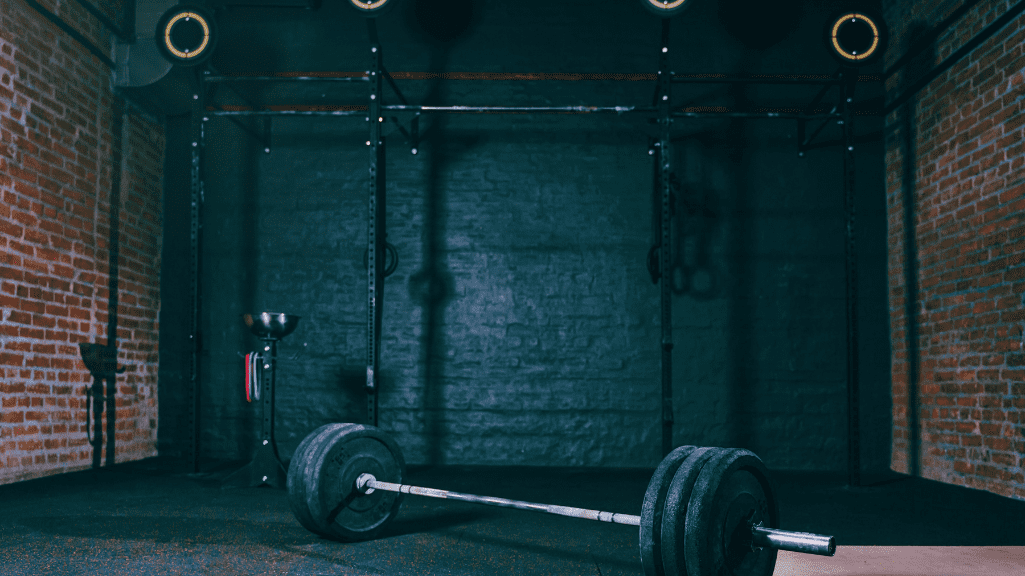
Space Assessment
Before purchasing crossfit equipment for home, it’s crucial to evaluate your available space to ensure a functional and efficient gym setup. Whether you have a large room, a garage gym, or limited space in a small apartment, here’s how to make the most of your available area:
1. Measure Your Space
- Take precise measurements of the room or area you intend to set up your home gym. This will help you visualize how much equipment can comfortably fit without overcrowding.
- Consider the height of the ceiling as well, especially if you plan to use equipment such as a pull-up bar or squat rack that requires vertical space.
2. Maximize Small Spaces
For those with limited space, such as in apartments or smaller homes, optimizing every square foot becomes essential:
- Compact Equipment: Choose crossfit equipment for home that is versatile and space-saving, like foldable mats, wall-mounted racks, or multi-use benches that can be stowed away when not in use.
- Wall-Mounted Options: Wall-mounted storage solutions help save floor space while still accommodating essential equipment like dumbbells or resistance bands.
3. Create Functional Zones
Even in small spaces, designate separate areas for different types of exercises. For example:
- A corner for weightlifting
- An area for cardio equipment
- A space for bodyweight or functional movements
Budget Planning
The cost of setting up a home CrossFit gym can vary depending on your fitness level and goals. Here’s a breakdown for beginner, intermediate, and advanced setups, along with some cost-saving tips.
1. Beginner Setup
For those just starting their fitness journey, a basic home gym can be built without breaking the bank:
- Barbell and Weight Plates: Essential for strength training
- Dumbbells: Adjustable dumbbells or fixed pairs
- Resistance Bands: Great for mobility and functional movements
- Mat or Flooring: To protect the floor and improve safety
Estimated Cost: $500 – $800
Cost-Saving Tip: Consider buying second-hand crossfit equipment for home such as gently used dumbbells or weight plates, which can be more affordable than brand-new options.
2. Intermediate Setup
As your fitness level increases, so does the variety and complexity of equipment needed:
- Squat Rack: For heavier lifts like squats and bench presses
- Rowing Machine or Assault Bike: Ideal for high-intensity interval training (HIIT)
- Kettlebells and Medicine Balls: Enhance functional movements
- Pull-Up Bar: Perfect for bodyweight strength exercises
Estimated Cost: $1,200 – $2,000
Cost-Saving Tip: Opt for crossfit equipment for home that has multi-use features. For example, a power rack can combine a squat rack, pull-up bar, and barbell storage, eliminating the need for multiple separate pieces.
3. Advanced Setup
Experienced CrossFit athletes who require advanced gear may invest in high-end equipment for maximum performance:
- Olympic Weightlifting Bar: Engineered for heavy lifts
- Customizable Rigs: Feature attachments for pull-ups, dip bars, and storage
- High-End Rowers or Echo Bikes: Designed for durability and performance
- Specialty Accessories: Foam rollers, stability balls, and bands for mobility
Estimated Cost: $3,000 and above
Cost-Saving Tip: Focus on long-term quality when investing in advanced equipment. Brands like Rogue Fitness and Eleiko offer professional-grade crossfit equipment for home that withstands intense use over time.
Personal Goals
Aligning your crossfit equipment for home with your fitness goals is crucial for maximizing your workouts. Whether your objective is strength, endurance, or mobility, specific pieces of equipment can help you achieve those goals more efficiently.
1. Strength Training
For those focused on building muscle and strength:
- Barbell and Weight Plates: Essential for compound movements like squats, deadlifts, and presses
- Squat Rack: Provides safety and stability during heavy lifts
- Bench Press: Enables upper-body strength work
2. Endurance and HIIT
For high-intensity interval training and cardiovascular fitness:
- Rowing Machine: Offers full-body cardio and strength work
- Assault Bike: Combines strength and endurance into one exercise
- Kettlebells: Versatile for conditioning and explosive movements
3. Mobility and Functional Fitness
For enhancing flexibility, mobility, and functional movements:
- Resistance Bands: Great for dynamic stretching and mobility drills
- Balance Trainers: Improve stability and coordination
- Dumbbells and Medicine Balls: Enhance functional and core strength
By aligning your equipment choices with your specific fitness objectives, you can create a workout environment tailored to your personal needs.
Chart: Matching Equipment to Space Sizes
| Space Size | Recommended Equipment | Tips for Optimisation |
|---|---|---|
| Small Spaces (<100 sq ft) | Compact dumbbells, resistance bands, wall-mounted pull-up bars, foldable mats | Use vertical storage and foldable options to save space. |
| Medium Spaces (100-250 sq ft) | Squat rack, barbell with plates, kettlebells, adjustable bench | Create distinct workout zones to avoid clutter. |
| Large Spaces (>250 sq ft) | Full power rack, rowing machine or assault bike, Olympic lifting platform, storage racks | Organise equipment with racks and leave room for functional movements. |
When building a home CrossFit gym, taking the time to assess your space, plan your budget, and align your equipment with your fitness goals will lead to a more efficient and rewarding training experience. With the right crossfit equipment for home, you’ll have a space that supports continuous growth and achievement.
Essential CrossFit Equipment for Home
Setting up a home gym tailored to CrossFit training requires key pieces of equipment that support a wide range of functional movements, from strength training to cardio. CrossFit equipment for home plays a crucial role in helping athletes perform various exercises effectively. Below is an in-depth look at essential equipment, breaking down their purpose, exercises supported, muscle groups engaged, and tips for buying the best options.
1. Olympic Barbell and Plates
Overview
An Olympic barbell and plates are the foundation of any CrossFit setup focused on weightlifting and strength exercises. These pieces are essential for both beginner and advanced lifters, providing the necessary tools for deadlifts, squats, and Olympic lifts like snatches and cleans.
Primary Exercises
- Deadlifts
- Squats
- Snatches
- Cleans
Targeted Muscles
Olympic barbells engage full-body muscles, with a primary focus on the legs, back, and shoulders. They help develop strength, power, and stability across multiple muscle groups.
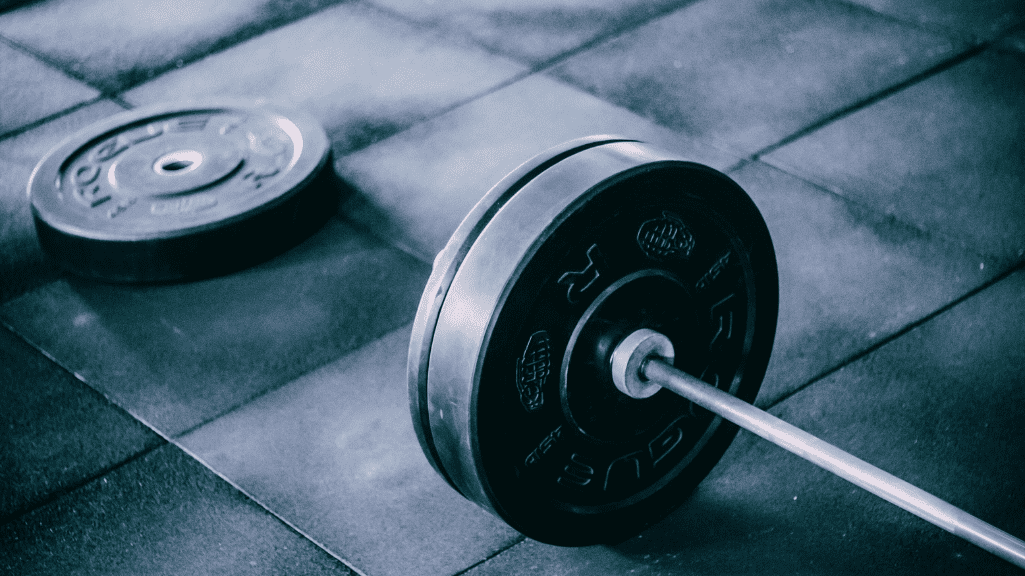
Buying Tips
- Barbell Dimensions: Look for a barbell with standard dimensions, typically 28–29mm diameter, for versatility in CrossFit movements.
- Knurling: Ensure the barbell has quality knurling for a secure grip.
- Durable Plates: Choose durable bumper plates that can handle heavy drops without damage.
Recommended Brands
- Rogue Fitness: Known for high-quality barbells and plates
- Eleiko: Offers precision-engineered Olympic equipment
2. Pull-Up Bar
Overview
A pull-up bar is a staple in CrossFit for building upper-body strength and endurance. Whether mounted on a wall or a doorway, it serves a variety of functions, supporting essential exercises like pull-ups, chin-ups, and kipping movements.
Primary Exercises
- Pull-ups
- Chin-ups
- Toes-to-Bar
- Kipping Movements
Targeted Muscles
Pull-ups engage the lats, biceps, core, and grip strength, making them a versatile tool for upper-body development.
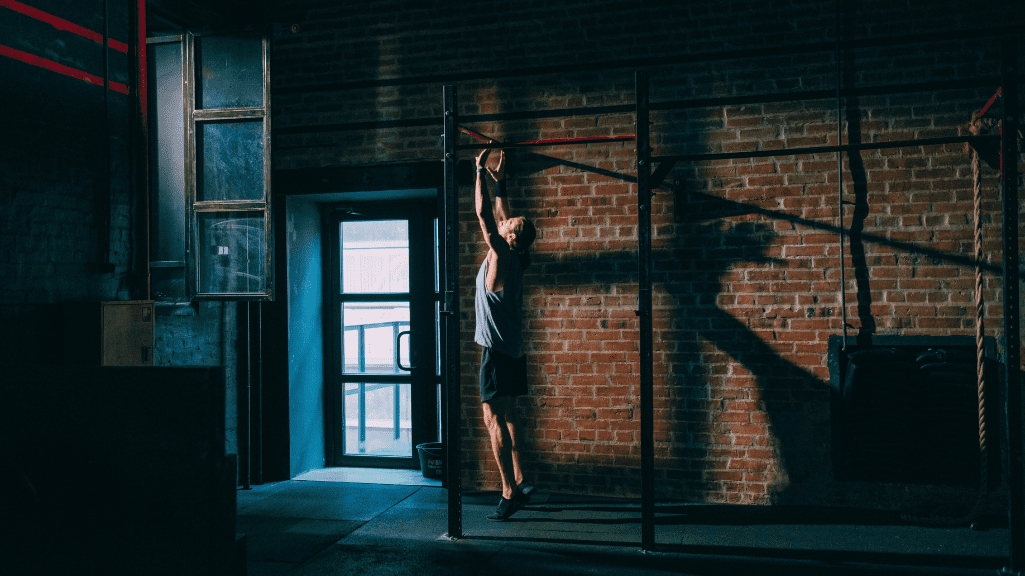
Buying Tips
- Mounting Options: Consider doorway-mounted bars for compact spaces, or wall-mounted options for added durability.
- Durability: Look for a bar constructed with strong steel or stainless steel to handle intense use.
Recommended Brands
- Ader Fitness: Offers both wall-mounted and portable options
- Rogue Fitness: Provides sturdy pull-up bars for serious training
3. Kettlebells
Overview
Kettlebells are incredibly versatile and essential for a variety of CrossFit exercises. They support movements that improve strength, endurance, and conditioning, such as swings, goblet squats, and Turkish get-ups.
Primary Exercises
- Swings
- Goblet Squats
- Turkish Get-ups
- Snatches
Targeted Muscles
Kettlebells target glutes, hamstrings, core, and shoulders, offering a comprehensive workout for strength and endurance.
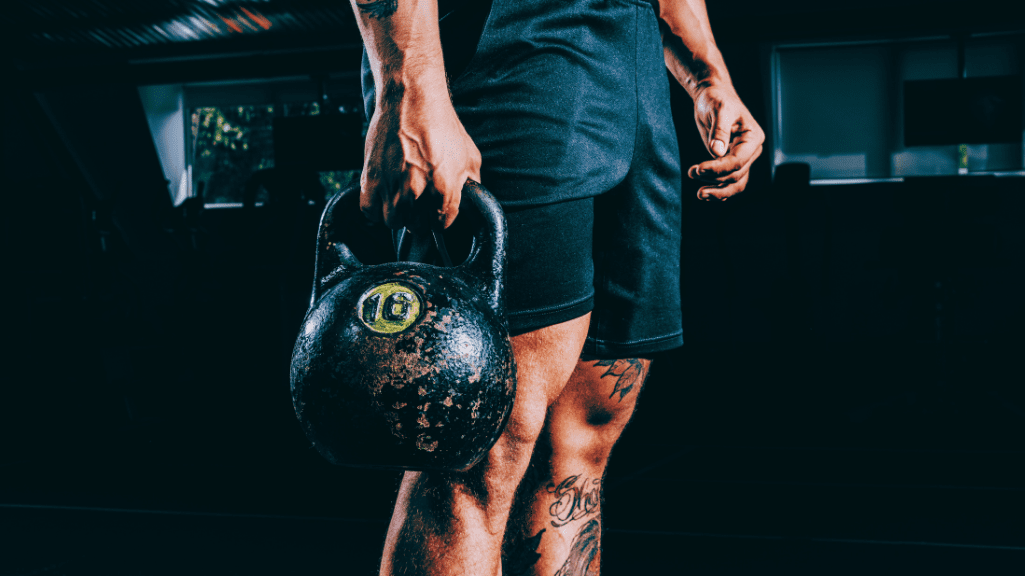
Buying Tips
- Weight Range: Choose the appropriate weight for your level—start with lighter options and progress as you build strength.
- Material: Cast iron is durable and provides a comfortable grip for extended use.
Recommended Brands
- Kettlebell Kings: Offers high-quality, durable kettlebells
- Onnit: Provides ergonomic and well-crafted kettlebells
4. Gymnastic Rings
Overview
Gymnastic rings are ideal for bodyweight training and improving overall stability. They are widely used in CrossFit for movements like ring dips, muscle-ups, and ring rows.
Primary Exercises
- Ring Dips
- Muscle-ups
- Ring Rows
Targeted Muscles
Gymnastic rings primarily engage shoulders, chest, and core muscles, helping to develop functional strength and balance.
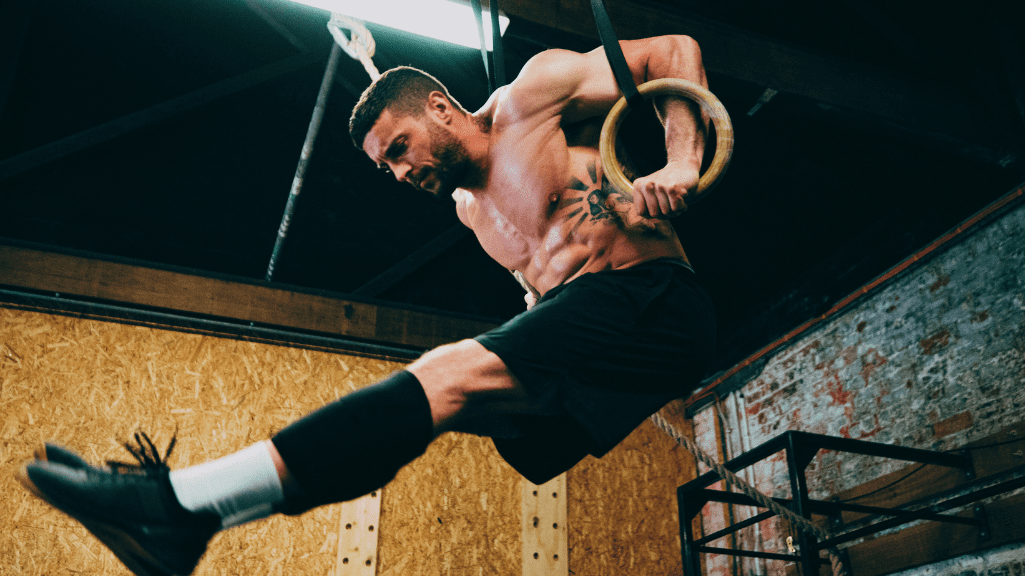
Buying Tips
- Adjustable Straps: Look for rings with adjustable straps for easy setup and customization.
- Durable Materials: Ensure the rings are made from high-quality wood or durable plastic.
Recommended Brands
- WOD Nation: Offers durable gymnastic rings with adjustable straps
- Rogue Fitness: Known for professional-grade rings
5. Jump Rope
Overview
A jump rope is essential for improving cardiovascular fitness, agility, and coordination. It plays a critical role in both warm-ups and conditioning sessions in CrossFit workouts.
Primary Exercises
- Double-Unders
- Speed Jumps
Targeted Muscles
Jump ropes primarily engage calves, shoulders, and core muscles, helping develop endurance and coordination.
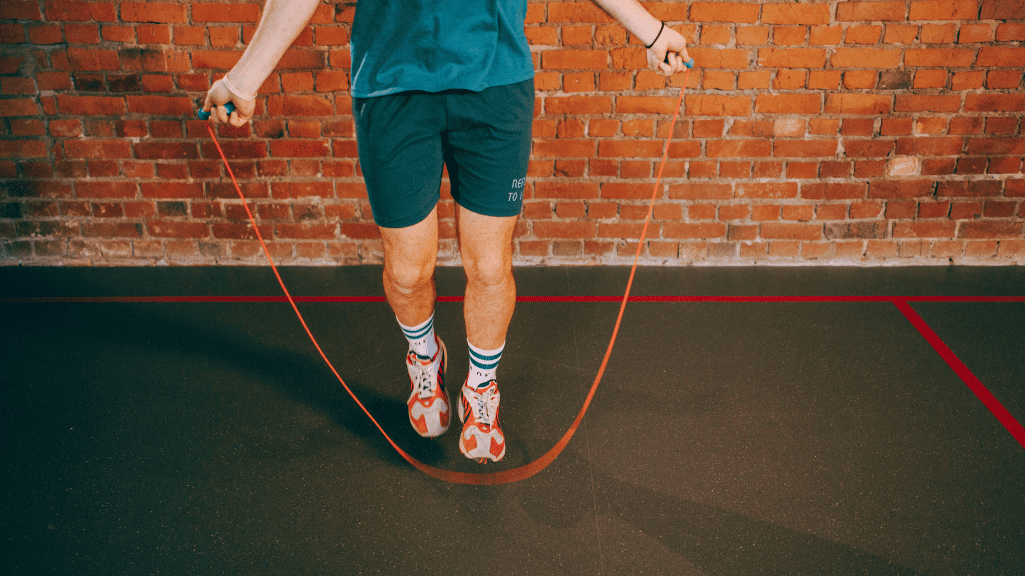
Buying Tips
- Adjustable Length: Choose a jump rope that can be easily adjusted to your height for optimal performance.
- Lightweight Design: Opt for a lightweight rope to increase speed and precision.
Recommended Brands
- RX Smart Gear: Offers adjustable jump ropes ideal for CrossFit
- Elite SRS: Known for durable and speedy ropes
6. Medicine Ball
Overview
A medicine ball is a great tool for dynamic movements and functional strength training. It supports exercises like wall balls, slams, and partner workouts, making it a staple in many CrossFit routines.
Primary Exercises
- Wall Balls
- Slam Balls
- Partner Workouts
Targeted Muscles
Medicine balls engage the core, chest, and legs, providing a full-body workout with explosive movements.
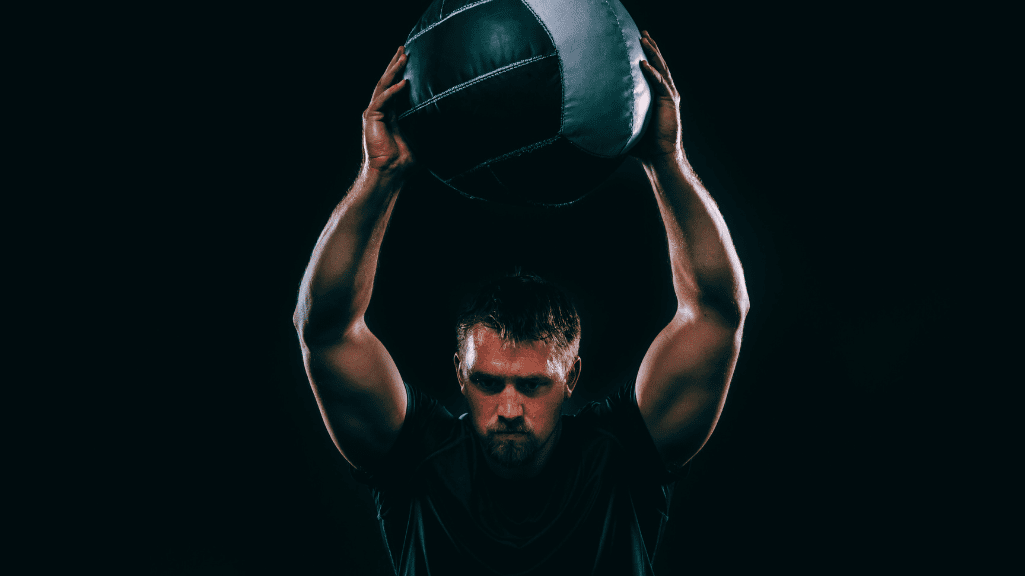
Buying Tips
- Durability: Look for a medicine ball with a durable, textured surface for a firm grip.
- Weight Options: Select the appropriate weight for your fitness level.
Recommended Brands
- BOMKB: Offers high-quality medicine balls with excellent grip
- ProSource: Provides durable, functional medicine balls
7. Plyometric Box
Overview
A plyometric box is essential for explosive power and agility exercises, such as box jumps and step-ups. These are great for improving overall lower body and core strength.
Primary Exercises
- Box Jumps
- Step-Ups
- Box Squats
Targeted Muscles
Plyometric boxes engage legs, core, and improve explosive power for dynamic movements.
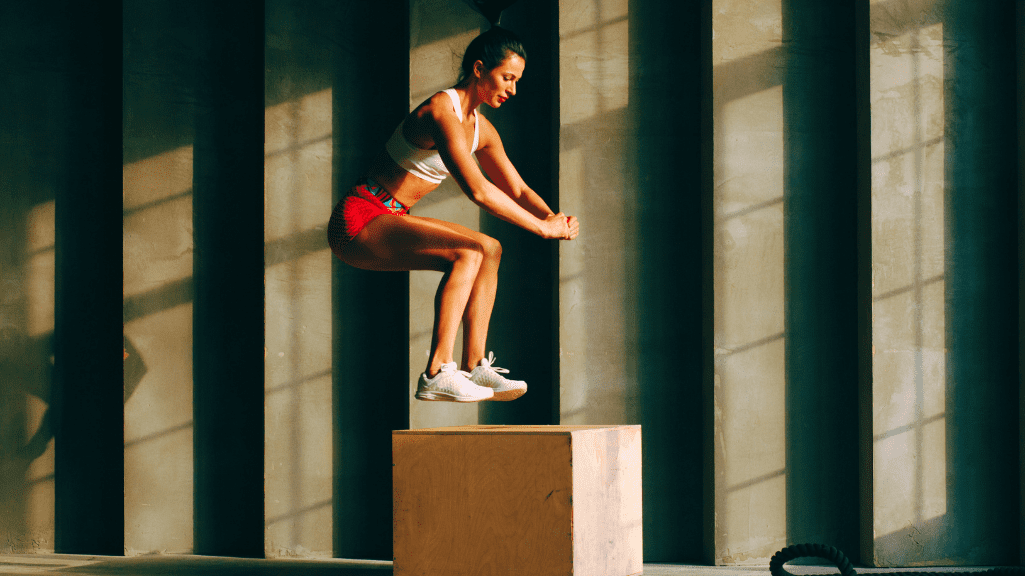
Buying Tips
- Stability: Ensure the box is stable and has a non-slip surface for safety.
- Height Options: Choose the appropriate box height based on your fitness level.
Recommended Brands
- VALEO: Provides sturdy, non-slip plyometric boxes
- Rep Fitness: Offers versatile boxes for CrossFit athletes
8. Resistance Bands
Overview
Resistance bands are a versatile addition to any CrossFit gym setup. They are excellent for mobility, warm-ups, strength training, and assistance with pull-ups.
Primary Exercises
- Pull-Up Assistance
- Stretching
- Resistance Training
Targeted Muscles
Resistance bands engage full-body muscles, enhancing flexibility and adding resistance to bodyweight exercises.
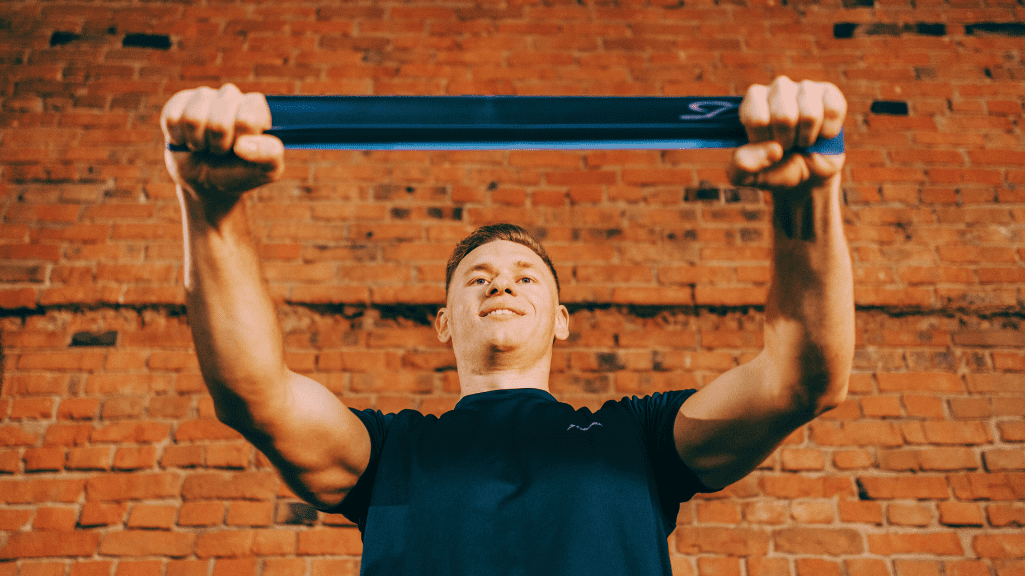
Buying Tips
- Resistance Levels: Select multiple bands with varying resistance levels for versatility.
- Durable Material: Look for bands made from high-quality, long-lasting material.
Recommended Brands
- BESPORTBLE: Offers high-quality resistance bands with a range of resistance levels
- WOD Nation: Known for durable, color-coded resistance bands
Having the right crossfit equipment for home ensures that your training is well-rounded and tailored to your fitness goals. Whether focusing on strength, endurance, or mobility, each piece of equipment plays a vital role in supporting various CrossFit exercises. By selecting durable and versatile options, you can create a functional and efficient home gym.
Additional CrossFit Equipment for Home Training
As you advance in your CrossFit journey, your training demands evolve. Incorporating optional equipment for home CrossFit can help take your workouts to the next level, focusing on advanced movements, strength, and endurance. These pieces of equipment are designed to challenge even seasoned athletes, pushing the limits of performance and capability. Below, we’ll explore some of the most valuable pieces of advanced CrossFit equipment for home and how they contribute to your overall fitness.
1. Weighted Vests
Overview
A weighted vest is a versatile tool for adding resistance to a variety of movements. It is particularly useful for scaling workouts and increasing the difficulty of bodyweight exercises. Whether you’re performing bodyweight squats, push-ups, or running, a weighted vest enhances the intensity of your workouts.
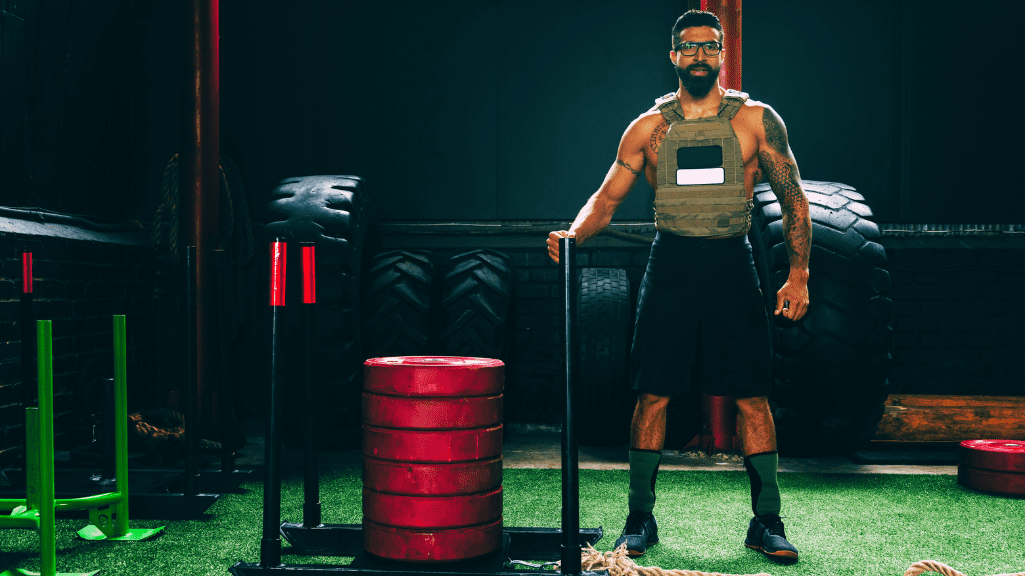
Primary Exercises
- Bodyweight Squats
- Pull-Ups
- Push-Ups
- Running or Walking
Targeted Muscles
Weighted vests engage multiple muscle groups, including legs, core, chest, and shoulders, by increasing resistance and demanding more from the body.
Buying Tips
- Weight Range: Choose a vest with adjustable weights for versatility.
- Comfort: Ensure the vest fits snugly with padded shoulder straps for comfort during extended use.
- Durability: Look for vests made from durable, high-quality materials that withstand heavy workouts.
Recommended Brands
- CAP Barbell: Offers affordable weighted vests with adjustable weights
- Xtreme Pro Fitness: Provides high-end vests designed for advanced CrossFit athletes
2. Rowing Machine
Overview
A rowing machine is an excellent addition to your home gym for full-body endurance and cardio workouts. It targets both upper and lower body muscles, promoting balance, strength, and cardiovascular fitness. Whether for low-impact sessions or intense interval training, rowers are a staple for athletes looking to build endurance and endurance-based strength.
Primary Exercises
- Rowing Sprints
- Long-Distance Rows
- Interval Training
Targeted Muscles
Rowing machines engage quads, hamstrings, calves, core, and arms, providing a balanced, low-impact cardio workout that strengthens almost every muscle group.
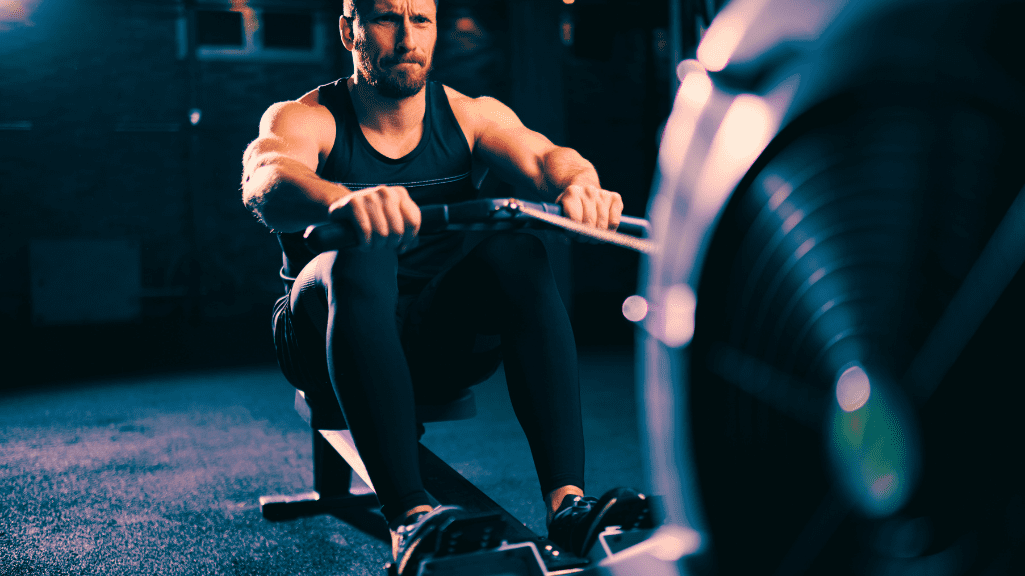
Buying Tips
- Resistance Levels: Opt for rowers with adjustable resistance for varied intensity levels.
- Durability: Look for rowers constructed from high-quality steel or aluminum for longevity.
- Monitor Features: Ensure the machine includes a functional performance monitor to track distance, calories burned, and strokes per minute.
Recommended Brands
- Concept2: Widely regarded as the gold standard in rowers for CrossFit
- WaterRower: Offers a natural, smooth rowing experience with wood construction
3. Assault Bike
Overview
An Assault bike is one of the most intense cardio machines designed to push endurance limits. It combines high-intensity intervals with resistance, making it ideal for leg endurance, upper-body conditioning, and full-body strength. For advanced athletes, the Assault bike provides a challenge that is difficult to match with other cardio equipment.
Primary Exercises
- Interval Sprints
- Calories-Burning Challenges
- Leg Endurance Training
Targeted Muscles
Assault bikes work the legs, core, arms, and back, offering a full-body workout that builds both strength and cardiovascular endurance.
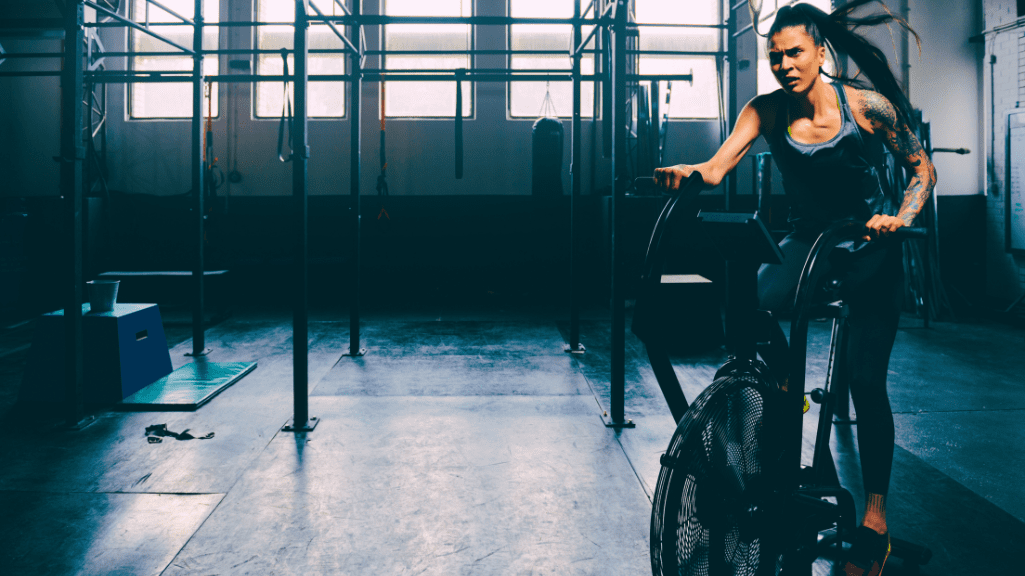
Buying Tips
- Adjustable Resistance: Ensure the bike offers variable resistance for scaling intensity.
- Comfort: Choose a model with a comfortable, ergonomic seat and handlebars for extended use.
- Durability: High-quality construction ensures the bike withstands intense, repetitive use.
Recommended Brands
- Assault Fitness: Known for durable, high-performing Assault bikes
- Schwinn: Provides solid alternatives for those looking for similar high-intensity cardio solutions
4. Squat Rack
Overview
A squat rack is an essential piece of advanced CrossFit equipment for home for heavy strength training. Squat racks provide a safe environment for lifting heavy weights, making them a must-have for those focused on powerlifting, Olympic lifting, and intense strength-building workouts.
Primary Exercises
- Squats
- Deadlifts
- Bench Press
- Overhead Presses
Targeted Muscles
Squat racks focus on lower body strength, particularly quadriceps, glutes, and hamstrings, while also engaging upper body muscles during pressing movements.
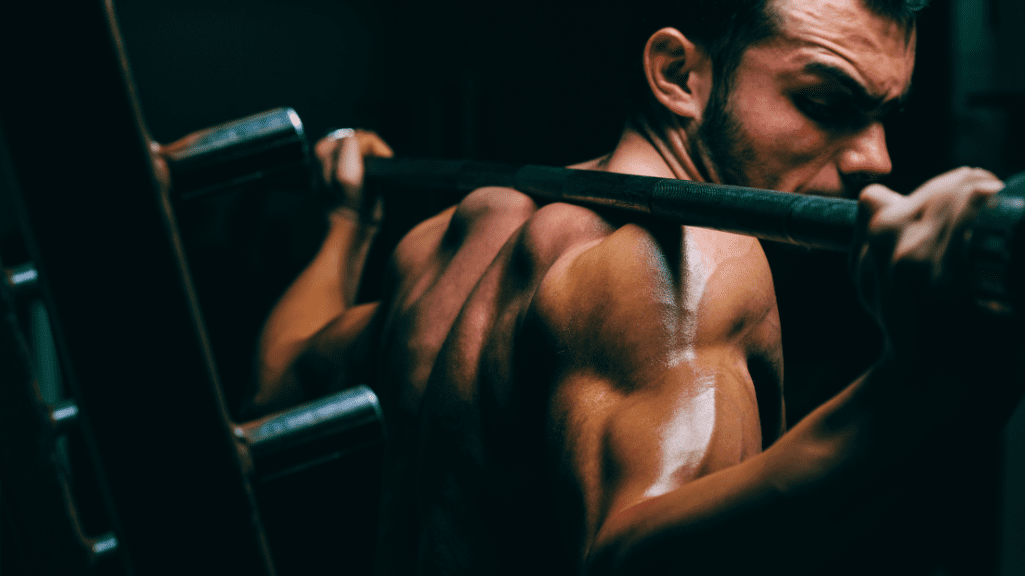
Buying Tips
- Safety Features: Look for racks with spotter arms or safety bars to minimize risk during heavy lifts.
- Build Quality: Ensure the rack is made from durable steel with a stable base.
- Space Considerations: Select a rack that fits your available space without compromising mobility or functionality.
Recommended Brands
- Rogue Fitness: Offers sturdy, high-capacity squat racks
- Titan Fitness: Provides versatile and affordable squat racks for home setups
For advanced CrossFitters, incorporating optional equipment for home CrossFit such as weighted vests, rowing machines, Assault bikes, and squat racks can elevate your training to new heights. These pieces of equipment challenge the body, improve endurance, and allow for more specialized strength development. By investing in high-quality, durable options, you’ll create a home gym capable of supporting the most demanding workouts.
Setting Up Your CrossFit Equipment for Home: Layout, Storage, and Flooring Solutions
Creating a Home CrossFit Gym is an exciting step toward achieving your fitness goals in a convenient and personal space. Whether you have a spare room, garage, or even just a corner of your basement, setting up a well-organized and functional gym requires careful planning. This guide will walk you through essential steps to ensure your space is optimized for safety, functionality, and efficiency.
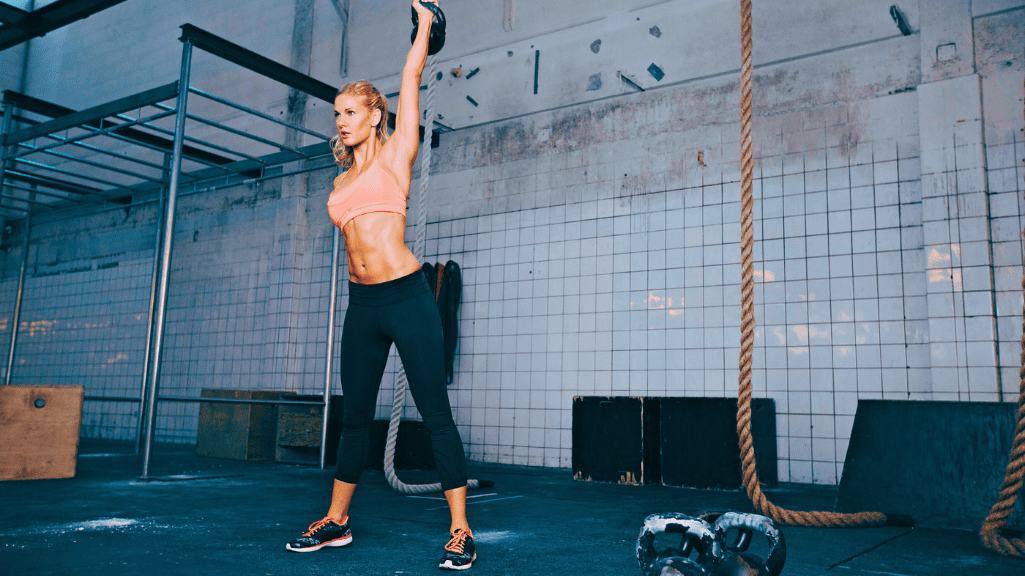
Layout Tips for Functionality and Safety
When designing your Home CrossFit Gym, the layout plays a crucial role in maximizing space and ensuring safety. A well-thought-out layout allows you to move freely and perform exercises without risking injury. Here are some tips for setting up the perfect layout:
1. Functional Zones
- Designate separate zones for different types of exercises. For instance, create a cardio area with equipment like a rower or jump rope, while keeping a strength section with squat racks and weights.
- Minimize clutter by ensuring each area has enough space for movements like lifting, jumping, and stretching.
2. Flow of Movement
- Ensure that the layout promotes smooth movement between equipment. Avoid placing heavy equipment near walkways to prevent accidents.
- Focus on easy access to CrossFit equipment for home, like kettlebells, medicine balls, and resistance bands, ensuring you can move between exercises seamlessly.
3. Safety Considerations
- Clear pathways are essential for reducing the risk of injury. Keep sharp corners and heavy equipment away from high-traffic areas.
- Include sufficient lighting and ventilation to create a safe, well-lit environment for workouts.
Storage Solutions for Organization
Keeping your Home CrossFit Gym organized is crucial for efficiency and safety. Without proper storage, your equipment can become difficult to manage, resulting in cluttered spaces that are harder to navigate. Here are some storage tips to help maintain an organized gym:
1. Wall Storage
- Utilize wall-mounted racks for equipment like resistance bands, jump ropes, or even small dumbbells.
- Pegboards are great for hanging lightweight equipment, keeping them within easy reach.
2. Shelving and Cabinets
- Invest in sturdy shelving units or storage cabinets to store heavier equipment, such as plates, barbells, or kettlebells.
- Opt for lockable storage if you share your gym space with family or roommates to keep equipment secure.
3. Floor Storage
- Use under-mat storage spaces, which are great for holding smaller items like wraps, straps, or wrist guards.
- For larger items like plyometric boxes or rowers, designate specific areas or use wheeled storage carts for easy movement.
Flooring Options for Safety and Noise Reduction
Flooring is a critical aspect of your Home CrossFit Gym. Not only does it protect your equipment, but it also safeguards your joints and minimizes noise. Here are some flooring options to consider:
1. Shock-Absorbing Mats
- High-density foam mats are ideal for reducing the impact of heavy equipment drops, especially when performing movements like Olympic lifts or high-intensity movements.
- These mats provide both protection for the floor and safety for your knees and joints.
2. Interlocking Rubber Tiles
- These tiles are a durable option that not only protects floors but also offers excellent noise reduction. Perfect for garages or basements where noise can be an issue during high-intensity workouts.
- Look for tiles with a textured surface to prevent slips during dynamic movements.
3. Gym Flooring Rolls
- Rolls provide a seamless surface ideal for covering larger spaces and provide ample support for heavy equipment. They’re also easier to clean and maintain compared to individual tiles or mats.
Setting up a Home CrossFit Gym involves careful planning to create a functional, safe, and organized space. From optimizing your layout to incorporating smart storage solutions and selecting the right flooring, each detail contributes to a seamless and efficient workout environment. By taking the time to design a thoughtful gym space, you’ll enjoy a more productive and injury-free CrossFit experience.
How to Use Your CrossFit Equipment for Home Effectively
Setting up a Home CrossFit Gym is just the first step in achieving your fitness goals. Once your equipment is in place, the real challenge lies in using it effectively to maximize your results. Whether you’re a beginner or an experienced athlete, incorporating proper workout strategies, tracking progress, and avoiding common pitfalls can make a significant difference in your fitness journey. Below, we’ll explore how to get the most out of your CrossFit equipment for home.
Sample Workouts of the Day (WODs)
One of the most exciting aspects of a Home CrossFit Gym is the ability to design your own workouts. Below are a few example WODs tailored to different skill levels and using various pieces of CrossFit equipment for home:
1. Beginner WOD
- Warm-up: 5 minutes of jump rope or bodyweight movements
- Workout:
- 3 rounds of:
- 10 Bodyweight Squats
- 15 Push-Ups
- 20 Mountain Climbers
- Cool down with 5 minutes of stretching
- 3 rounds of:
2. Intermediate WOD
- Warm-up: 3-minute row
- Workout:
- 4 rounds of:
- 10 Kettlebell Swings
- 12 Pull-Ups
- 15 Medicine Ball Slams
- End with a 5-minute mobility session
- 4 rounds of:
3. Advanced WOD
- Warm-up: 3-minute Assault Bike sprints
- Workout:
- AMRAP (As Many Rounds as Possible) in 20 minutes:
- 5 Squat Cleans
- 10 Toes-to-Bar
- 15 Wall Balls
- Cool down with foam rolling and static stretching
- AMRAP (As Many Rounds as Possible) in 20 minutes:
These workouts showcase how to effectively combine different pieces of CrossFit equipment for home to create intense, varied sessions.
Tracking Progress
Tracking your progress is essential for long-term improvement. With a home gym, there are plenty of tools and methods to monitor your performance:
1. Apps for Performance Tracking
- WODify: Offers detailed tracking of workouts, progress, and scores, perfect for those using CrossFit equipment for home.
- MyFitnessPal: Helps track macros and caloric intake, aiding performance alongside your fitness regimen.
- Beyond the Whiteboard: Great for logging workouts and analyzing performance trends over time.
2. Journals and Notebooks
- For a more analog approach, keeping a dedicated workout journal can help track weights, reps, and personal records, offering a physical record of your progress.
Avoiding Common Pitfalls
Staying consistent and injury-free while using your Home CrossFit Gym requires proactive attention to detail and some basic safety precautions. Here are a few tips to ensure a safe and effective workout:
1. Prioritize Proper Form
- Always focus on proper technique to avoid injury. Whether you’re lifting heavy weights or performing high-intensity movements, form should be your top priority.
- Use mirrors if available to monitor your form during exercises or seek guidance from instructional videos.
2. Gradually Increase Intensity
- Avoid overloading weights or attempting movements beyond your current skill level. Progression should be gradual to ensure steady, long-term gains without overexertion.
3. Incorporate Rest and Recovery
- Overtraining is a common pitfall. Ensure you schedule regular rest days and include recovery techniques like stretching, foam rolling, and active recovery exercises.
4. Consistency is Key
- Developing a habit is crucial. Design a consistent schedule using your CrossFit equipment for home and stick to it. Accountability through tracking progress can also boost motivation.
Summary
Using a Home CrossFit Gym effectively goes beyond simply having the right equipment. With well-structured WODs, thoughtful progress tracking, and a focus on safety, you can maximize the benefits of your setup. By creating balanced, consistent workouts and avoiding common pitfalls, you’ll ensure a productive and injury-free CrossFit journey.
Your Journey to Building a CrossFit Equipment for Home
Creating a Home CrossFit Gym is a rewarding and empowering step towards achieving your fitness goals. Throughout this guide, we’ve explored the essentials, considerations, and tips for setting up a functional and effective space. From understanding the benefits of a home gym to selecting the right equipment, each section has contributed to providing a comprehensive roadmap. Now, let’s summarize the key points and provide motivation to help you kickstart your journey confidently. Additionally, we’ll include a FAQ section to address common questions you may have as you build your personal gym.
Key Points Summarized
1. Why Build a Home CrossFit Gym?
- A Home CrossFit Gym saves time, eliminates commute costs, and provides a personalized workout environment tailored to your goals.
- You have the freedom to customize your workouts, optimize your space, and invest in equipment that suits your fitness objectives.
2. Key Considerations Before Buying CrossFit Equipment
- Assess your available space and plan your budget. Options range from beginner to advanced setups, with opportunities to save through secondhand equipment or DIY projects.
- Match your equipment choices to your personal fitness goals—whether it’s strength, endurance, or mobility.
3. Essential CrossFit Equipment for Home
- The foundational equipment includes Olympic barbells, kettlebells, pull-up bars, gymnastic rings, and resistance bands. Each serves a specific purpose to build strength, endurance, and functional fitness.
- Choosing the right equipment involves evaluating durability, size, weight, and price to create a well-rounded gym experience.
4. Optional Advanced Equipment
- For more advanced setups, weighted vests, rowers, and assault bikes provide additional intensity and variety to your workouts.
- Squat racks and storage solutions ensure that even the most complex training sessions can be completed safely and efficiently.
5. Effective Use of Your Home CrossFit Gym
- Create well-structured WODs to combine different pieces of equipment for varied, high-intensity sessions.
- Track your progress through apps, journals, and physical records to monitor your performance over time.
- Avoid common pitfalls like overtraining or improper form with structured programs and recovery methods.
Motivating Your Home Gym Journey
Building a Home CrossFit Gym is more than just acquiring equipment—it’s about creating a space that supports your fitness journey. Here are some key takeaways:
- Freedom and Flexibility: You’re in control of your workouts and schedule, ensuring consistency and adaptability.
- Personalized Environment: Tailoring your space to meet your specific fitness needs empowers you to train smarter and safer.
- Community Connection: Share your journey, setups, and insights by commenting, leaving feedback, or engaging with like-minded fitness enthusiasts online.
Share Your Setup & Explore Related Content
We invite you to share your Home CrossFit Gym setup in the comments section or via social media. Whether it’s your equipment choices, layout design, or personal WODs, your journey can inspire others to embark on their own fitness paths. Explore related blog posts, equipment guides, and success stories to fuel your motivation and creativity!
FAQ Section
1. What equipment do I need to start a basic CrossFit gym at home?
- A basic setup includes an Olympic barbell, bumper plates, pull-up bar, kettlebells, and a jump rope.
2. How can I save money when purchasing CrossFit equipment for home?
- Consider buying secondhand equipment, joining local CrossFit communities for shared discounts, or exploring DIY solutions for specific equipment needs.
3. Is a home CrossFit gym suitable for beginners?
- Yes, with proper guidance, even beginners can start with fundamental equipment like resistance bands and bodyweight movements.
4. What are the best flooring options for a home gym?
- Shock-absorbing mats and rubber flooring tiles are ideal for reducing noise and protecting the floor during intense workouts.
5. Can I track progress without advanced equipment?
- Absolutely! Journals, simple apps, and personal records work effectively alongside basic equipment for tracking progress.
6. How do I avoid injuries in a home gym setting?
- Focus on proper form, gradually increase intensity, and incorporate regular recovery practices such as stretching and foam rolling.
7. Are there advanced CrossFit workouts I can perform at home?
- Yes, incorporating weighted vests, assault bikes, and more complex movements like muscle-ups or barbell complexes are great for advanced sessions.
8. How important is space optimization in a home CrossFit gym?
- Maximizing space ensures safe, efficient workouts, and allows for flexibility in movement and exercise variety.
9. What’s the difference between a home gym and a commercial CrossFit box?
- Home gyms offer privacy, convenience, and the ability to customize equipment and workouts, whereas commercial boxes provide a community-based experience with larger, specialized facilities.
10. Can I combine cardio with strength training in a home CrossFit gym?
- Yes! Combining rowers, jump ropes, and resistance bands with strength equipment provides a balanced approach to both strength and endurance training.
Embarking on the journey of building and using a Home CrossFit Gym empowers you to take control of your fitness in a way that meets your personal goals. With the right equipment, proper planning, and motivation, you’ll unlock endless possibilities for growth, performance, and health!
